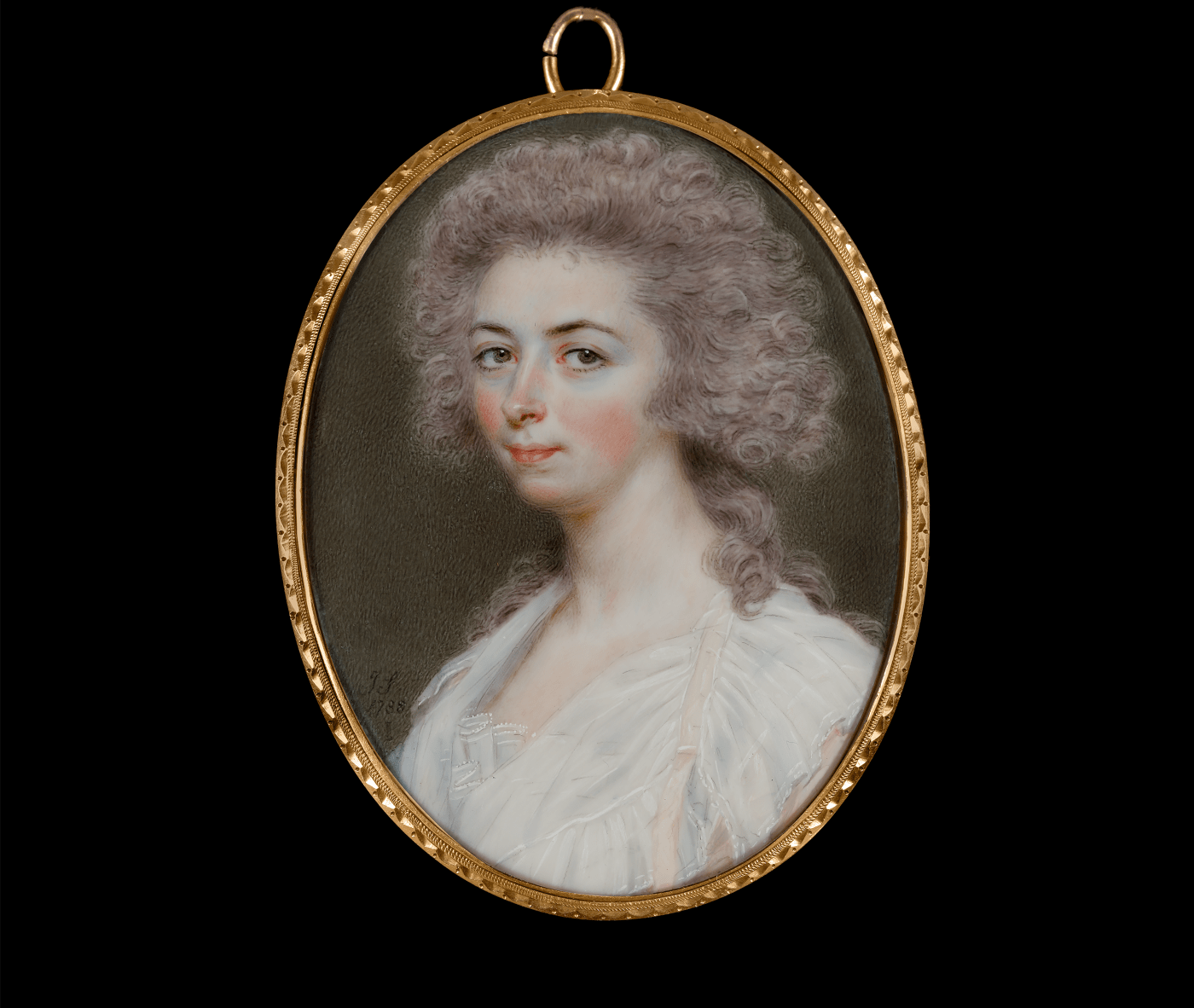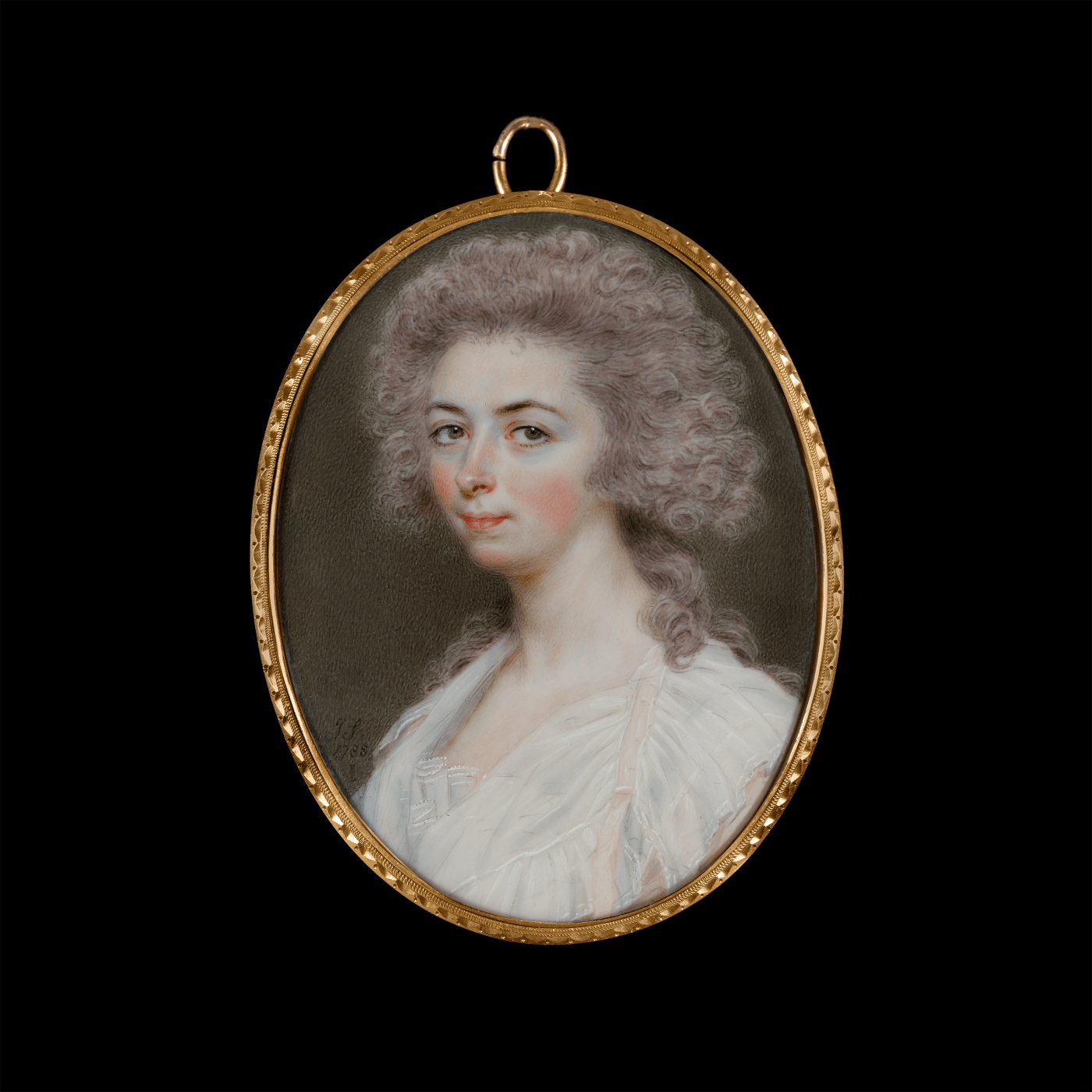The early life of John Smart (1741-1811) remains shrouded in mystery, a rather surprising fact given his prominence as one of Britain’s most celebrated portrait miniaturists of the eighteenth century. Recent research by Philip Mould & Company has uncovered mention of ‘John’, son of Philip Francis and Ann Smart, in the baptism records of St. Anne’s Church, Dean Street, suggesting that he was born in London sometime before June 1741.[1] In 1755 Smart became a pupil at William Shipley’s nascent Society for the Encouragement of Arts, Manufactures and Commerce. Here he won the premium in 1758 for his drawing, with his near contemporary, Richard Cosway, securing second place. By 1760 he seems to have set up an independent studio, with no evidence of time spent (as was usual) as apprentice to another artist.
His early successful years working in London, from his premises in Dean Street, Soho, instilled him with confidence and ambition and having built a loyal client base [Mrs. Russell, 1781, Edgar Corrie, 1775, both previously with Philip Mould & Company] was elected a Fellow of the Royal Society of Artists (FSA) in 1765, then director in 1772, Vice-President in 1777, and finally President in 1778, a position he held until the society’s liquidation.
By the mid-1760s, Smart was honing his technique, refining his miniatures into masterpieces of precision. His portrait of Miss Denton (c. 1767) for instance, stands at the cusp of the artist’s development, retaining the ‘modest’ qualities of the smaller portraits of the 1760s, while looking towards Smart’s colourful, meticulous works of the 1770s and 80s.
In 1785 Smart left for Chennai (Madras), India in pursuit of superior fame and fortune, accompanied by his daughter Anna Maria and later joined by her younger sister, Sophia. India at that time was a source of enormous wealth for servants of the East India Company and Smart was aware that the prosperous merchants, British aristocrats and officials, as well as Indian courtiers such as Muhammad Akli Khan, Prince of the Carnatic presented abundant demand for his small, portable portraits. His delicate and meticulous style, although more restrained than the virtuoso style of Cosway, soon won him a celebrity for remarkable clarity and naturalism. He worked in India for ten years producing a significant corpus of work.
His portrait of Ann Chase (née Rand) stands out among his commissions from the period. It was painted in 1788, the same year as the sitter's marriage to Thomas Chase, an East-India Company covenanted civil servant on the Fort St. George Establishment. A year after his marriage to Ann, in 1788. Thomas was working as agent to Gilbert Ross, as well as carrying out his official duties of ‘Senior Merchant, Clerk of Justice, Clerk to the Commissioner of Stores, Coroner and French Translator’. Ann would have enjoyed a good standard of living in India, as a Civil Servant’s salary amounted to circa £550 per annum, a steady income which Thomas boosted massively through private trade.






